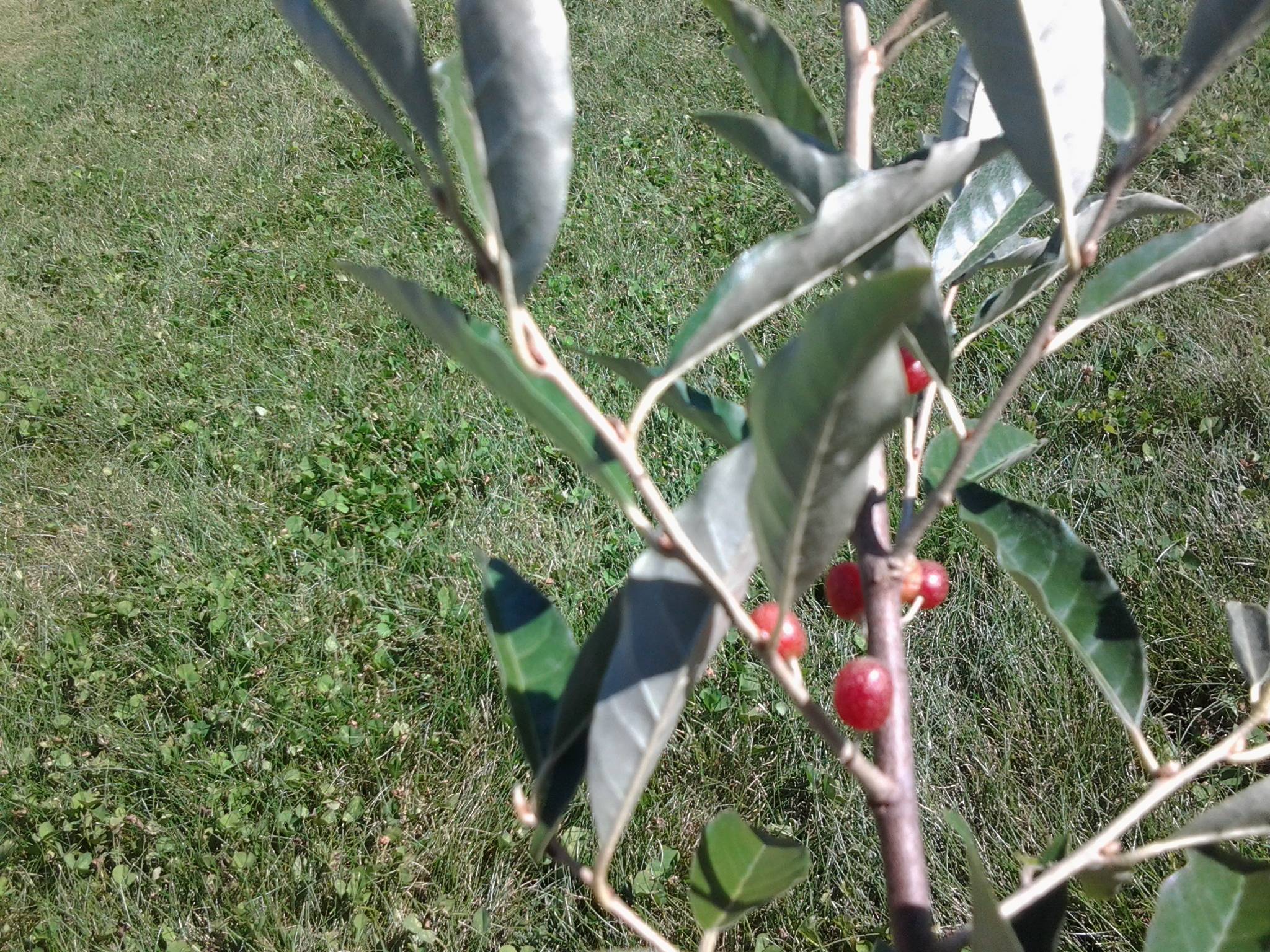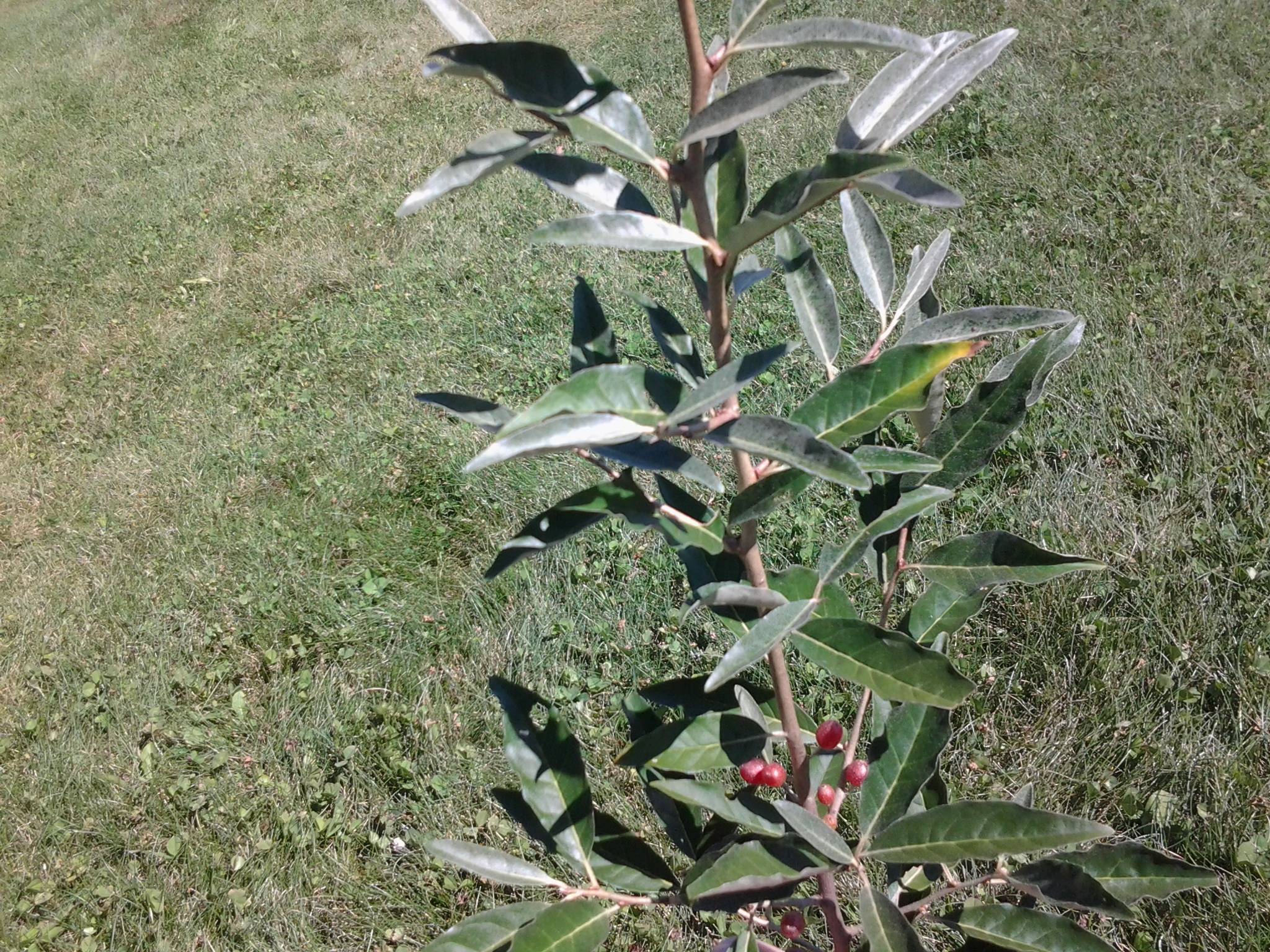This shrub is:
- found growing wild in a field
- in New Hampshire, USA; USDA Zone 5
- about 1m (3') tall
- alternate, smooth edged, ~6cm (2.5") long leaves
- growing on a hillside in gravelly, acidic (pH ~5), nutrient-poor soil
- fruit is small (<1cm) and red, containing a single seed ~6mm (1/4") long; it's September (beginning autumn here) and the berries are on the bush -- I'm not sure how long they've been there
- the area was completely cleared (i.e. with a bulldozer) about 5 years ago so the plant is not very old
Close-up of fruit:

Twig detail:

Overall:

Closer:

My hand in the shot for size reference on leaves.

Seed detail:

Bud detail:

